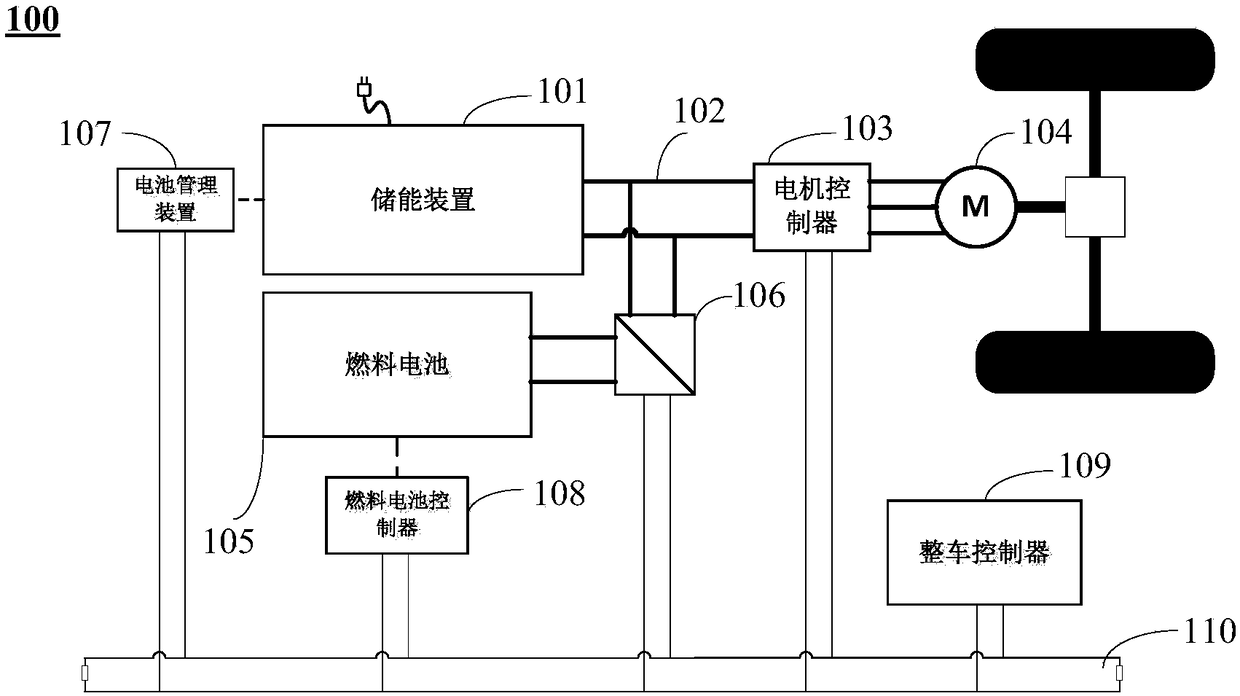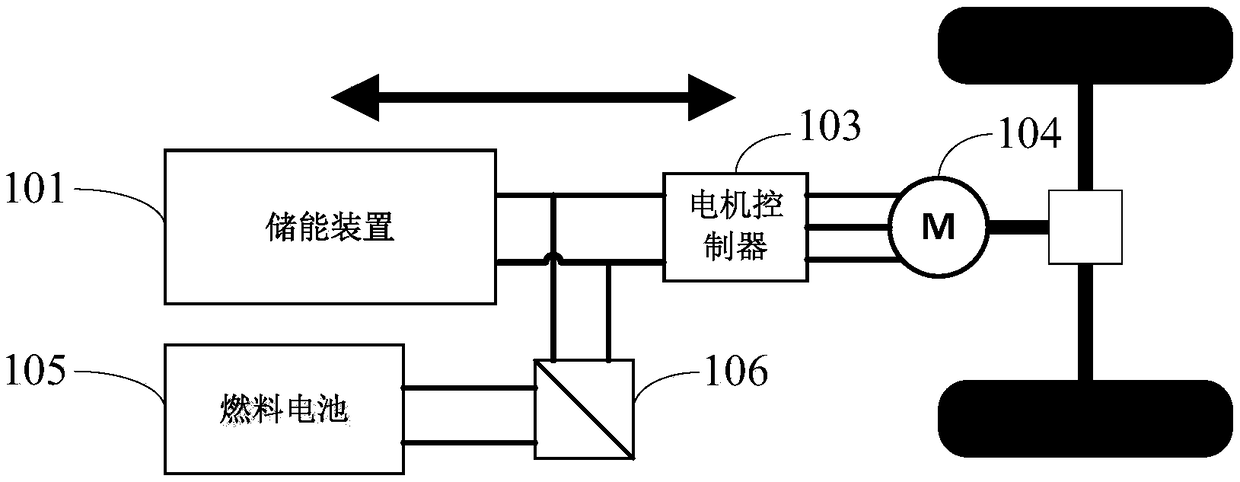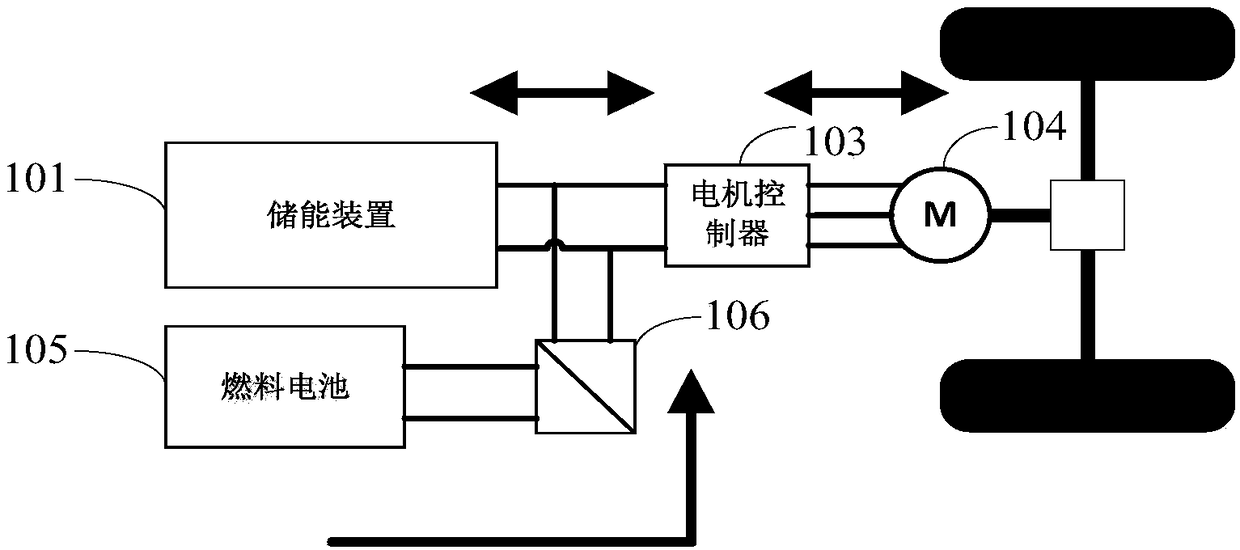Method, system and device for controlling vehicle power device and storage medium
A technology of a power device and a control method, applied in the field of new energy vehicles, can solve the problems of short service life, poor economy, poor reliability and accuracy of fuel cells and power batteries, and achieve the effect of avoiding severe dynamic load changes and prolonging life.
- Summary
- Abstract
- Description
- Claims
- Application Information
AI Technical Summary
Problems solved by technology
Method used
Image
Examples
Embodiment Construction
[0045] In order to make the technical solution of the present invention clearer, the control method, system, device and storage medium of the extended-range fuel cell vehicle power plant of the present invention will be further described in detail below in conjunction with the accompanying drawings. It should be understood that the specific embodiments described here are only used to explain the present invention and not to limit the present invention. It should be noted that, in the case of no conflict, the embodiments in the present application and the features in the embodiments can be combined with each other.
[0046] Such as figure 1As shown, the extended-range fuel cell vehicle power plant 100 in the embodiment of the present application includes an energy storage device 101, a battery management device 107, a fuel cell 105, a fuel cell controller 108, a voltage converter 106, a motor controller 103, and a vehicle The controller 109 and the drive motor 104. Wherein, t...
PUM
 Login to View More
Login to View More Abstract
Description
Claims
Application Information
 Login to View More
Login to View More - R&D
- Intellectual Property
- Life Sciences
- Materials
- Tech Scout
- Unparalleled Data Quality
- Higher Quality Content
- 60% Fewer Hallucinations
Browse by: Latest US Patents, China's latest patents, Technical Efficacy Thesaurus, Application Domain, Technology Topic, Popular Technical Reports.
© 2025 PatSnap. All rights reserved.Legal|Privacy policy|Modern Slavery Act Transparency Statement|Sitemap|About US| Contact US: help@patsnap.com



